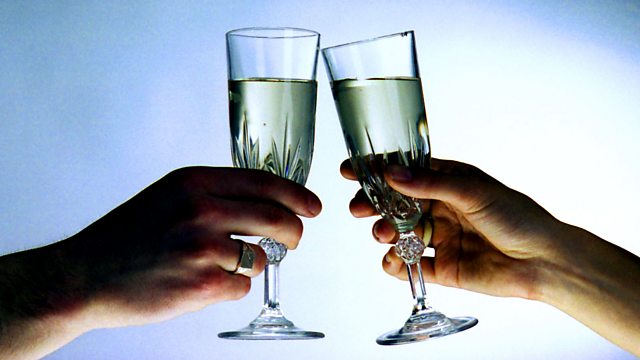The Champagne Underground
Champagne sceptic Dan Saladino travels to the French region in search of wine mavericks. A movement is underway that could make us all rethink the world's most celebrated bubbles.
Champagne sceptic Dan Saladino travels to the French region in search of the mavericks of fizz. These wine producers are part of a movement that's causing many to re-evaluate the world's most celebrated bubbles.
For many, including Dan, champagne is a drink purely of fun and celebration, a glass of bubbles most often enjoyed standing up; popping a cork has played a part in countless moments and memories of joy. But to others, it's also increasingly being treated as a serious wine, that as with the world's best bottles, can offer a sense of place, and that behind the fizz champagne can also be a wine of "terroir".
Dan is taken on a road trip through the Champagne region to meet a movement of small scale, vineyard driven "grower champagnes" by award winning wine writer Dan Keeling of the magazine Noble Rot. Influenced by the approach more often found in Burgundy and Bordeaux they're using specific vineyards to produce great wines that just happen to have bubbles.
As wine merchant Robert Walters, author of Bursting Bubbles: A Secret History of Champagne and The Rise of the Great Growers explains in the programme champagne was a product of the scientific and industrial revolutions.
Initially an unwanted accident in winemaking in the 18th century, this sparkling wine became a popular novelty feature across Europe. However it would take 200 years to master the bubbles.
The complex process of secondary fermentation of wine in bottles needed a huge amount of technical innovation and capital investment. From stronger glass bottles to muselet (the wire cage that helps to hold the cork in under great pressure), better understanding of fermentation and skills such as riddling, disgorgement and dosage all needed to be mastered and funded. This explains why champagne production fell under the control of the big houses, the "Grand Marques" e.g. Krug, Dom Perignon and Bollinger. These brands, also known as negociant houses, typically buy in grapes and wine from thousands of growers throughout the Champagne region and then make a blend in their house style.
Dan and Dan visit Krug, one of the most prestigious Grand Marques, to hear how this model works.
Meanwhile, from humble beginnings in the 1990s, a small group of growers have taken a different approach. They've decided to stop selling their grapes to the negociant houses and produce their own champagnes that are very much the product of their vineyards. Dan Keeling takes Dan on a tour of some of the best "grower champagnes" to see if this can convert a bubble sceptic into a lover of fizz.
Produced and presented by Dan Saladino.
Additional reading;
Bursting Bubbles: A Secret History of Champagne and The Rise of the Great Growers - Robert Walters.
Champagne: The Essential Guide to the Wines, Producers and Terroirs of the Iconic Region - Peter Liem.
Last on
More episodes
Previous
Next
Credits
| Role | Contributor |
|---|---|
| Presenter | Dan Saladino |
| Producer | Dan Saladino |
| Interviewed Guest | Dan Keeling |
| Interviewed Guest | Robert Walters |
Broadcasts
- Sun 31 Dec 2017 12:32麻豆官网首页入口 Radio 4
- New Year's Day 2018 15:30麻豆官网首页入口 Radio 4
Download this programme
Subscribe to this programme or download individual episodes.
Can comfort foods really make you feel better?
Yes they can, says Sheila Dillon.
Podcast
-
![]()
The Food Programme
Investigating every aspect of the food we eat


